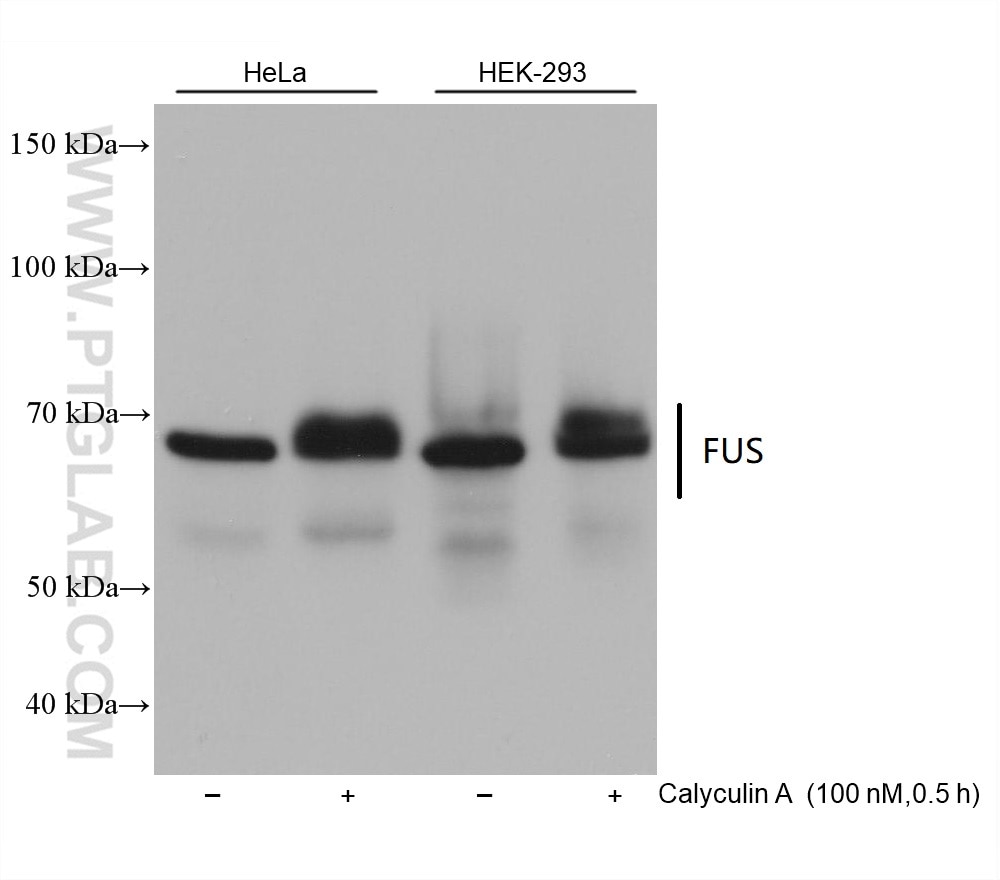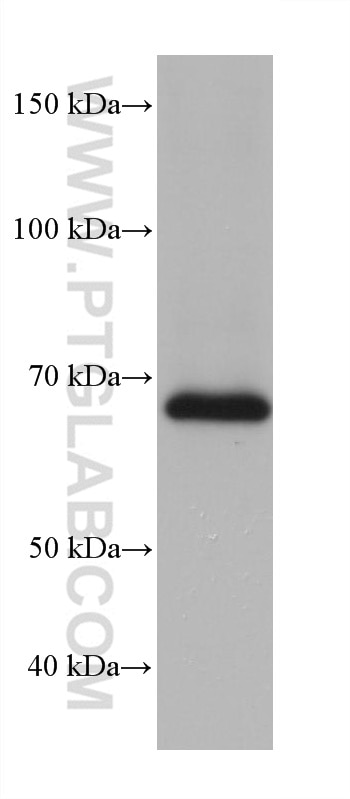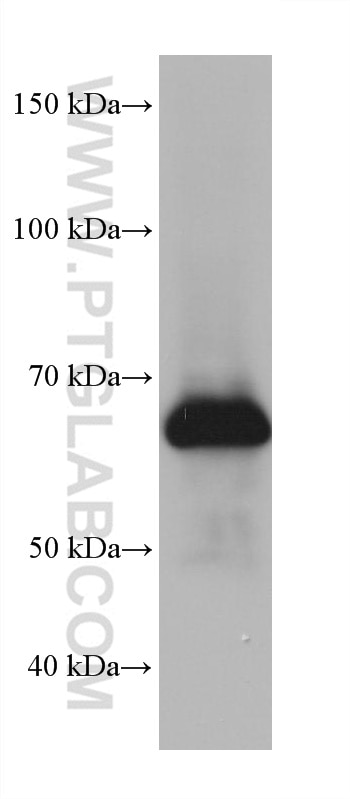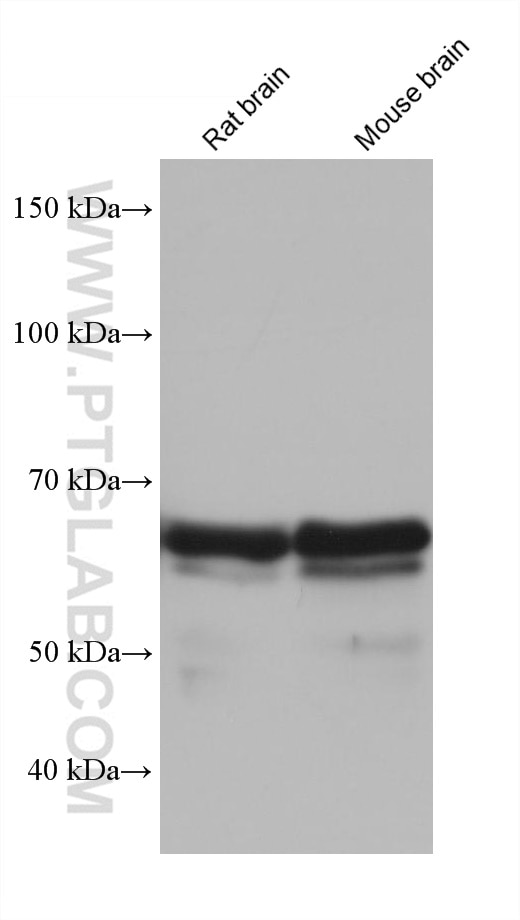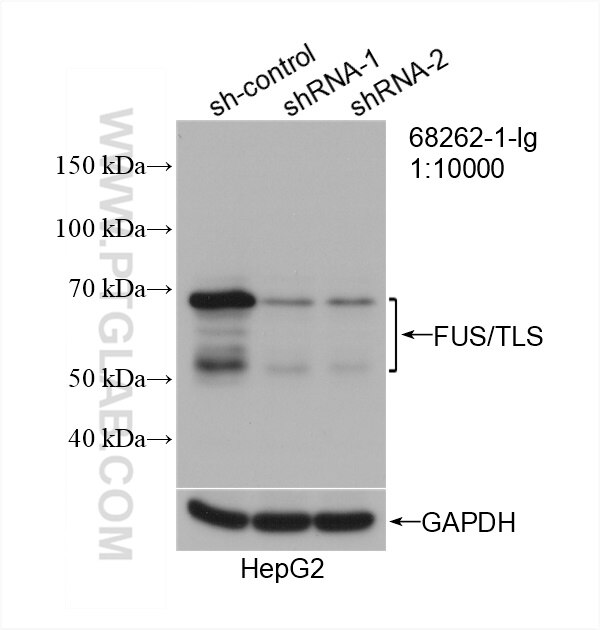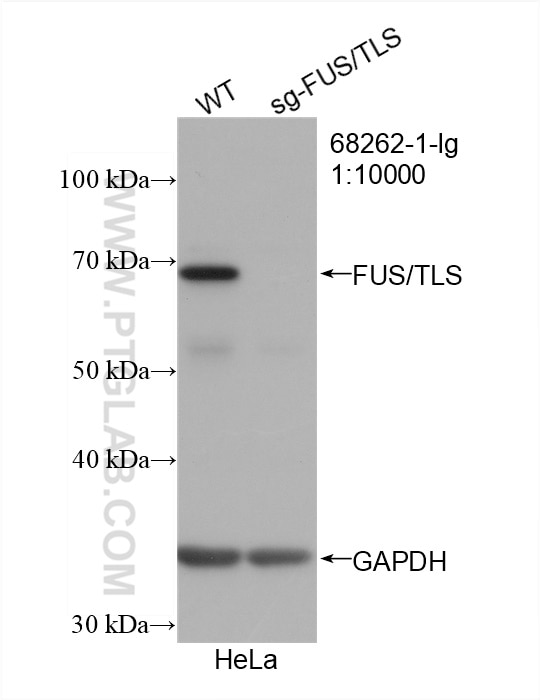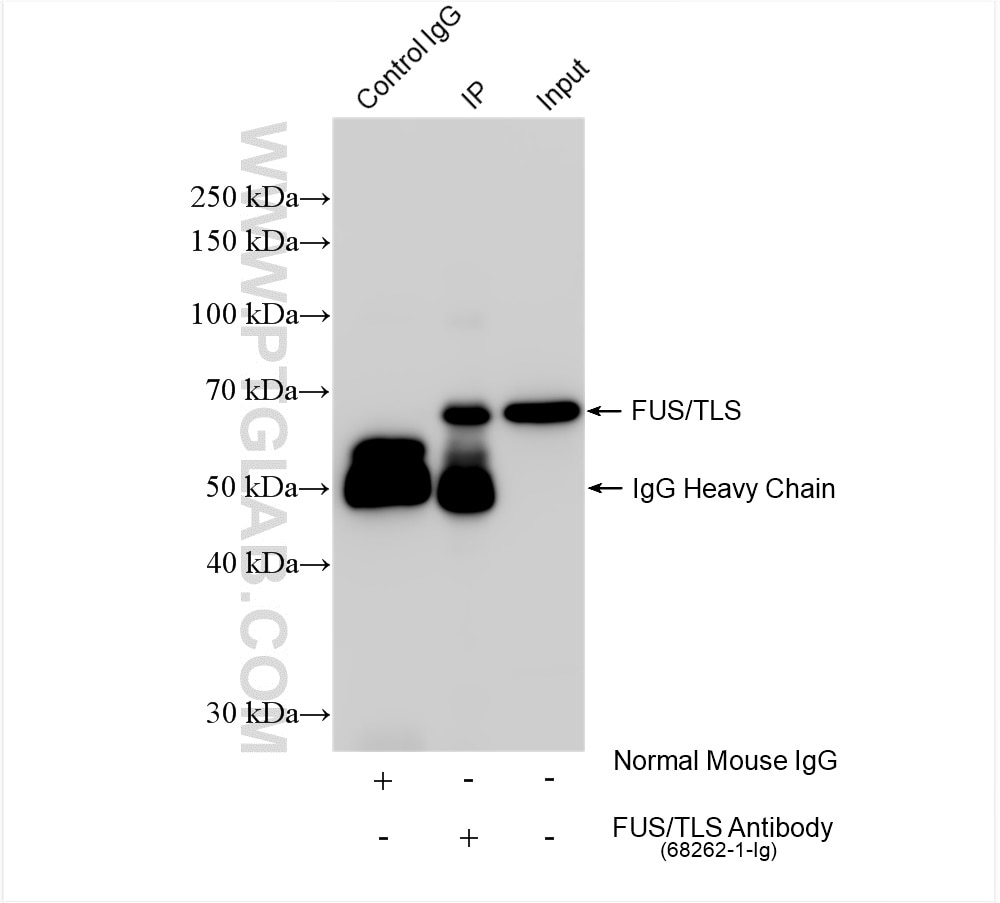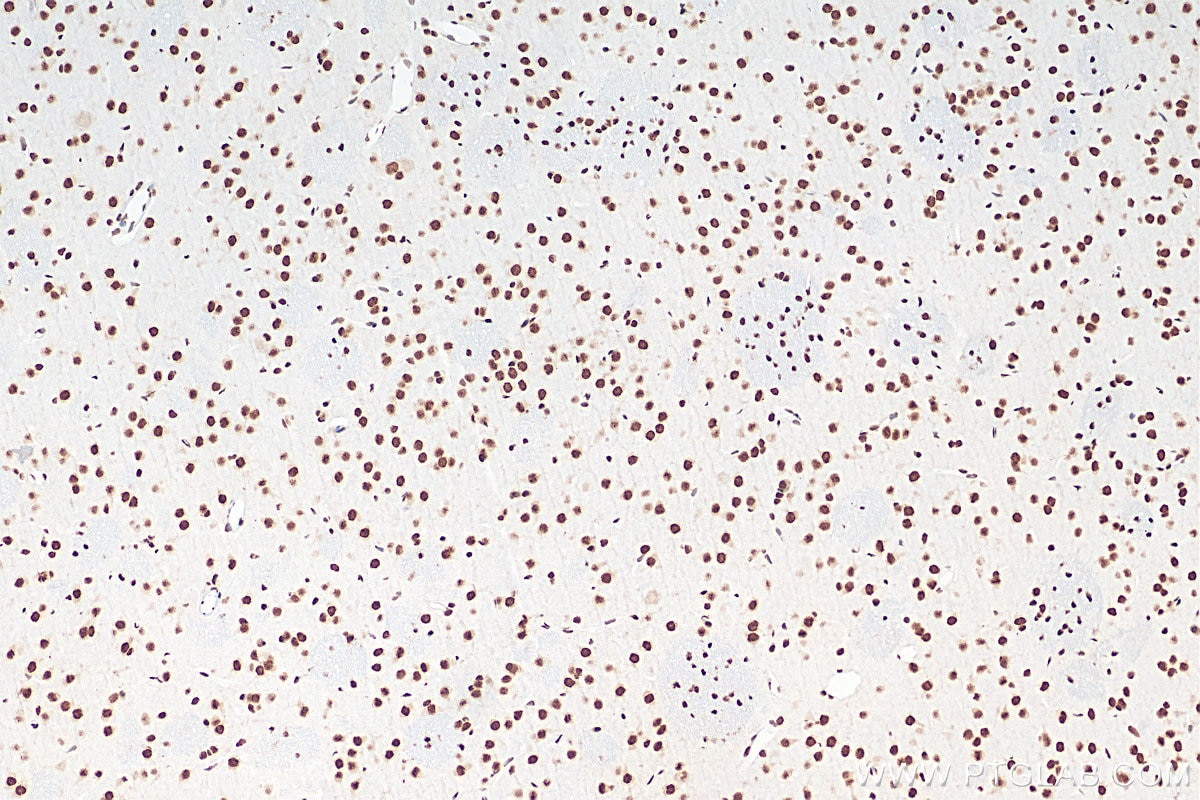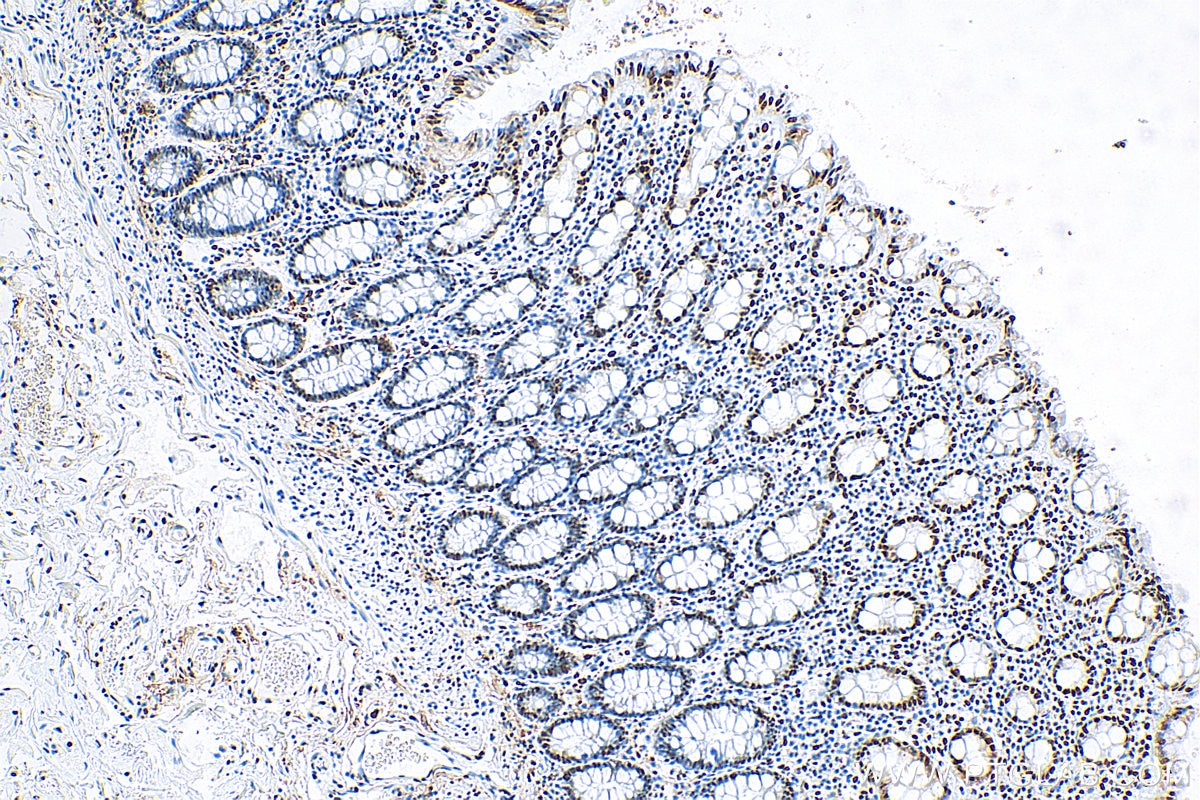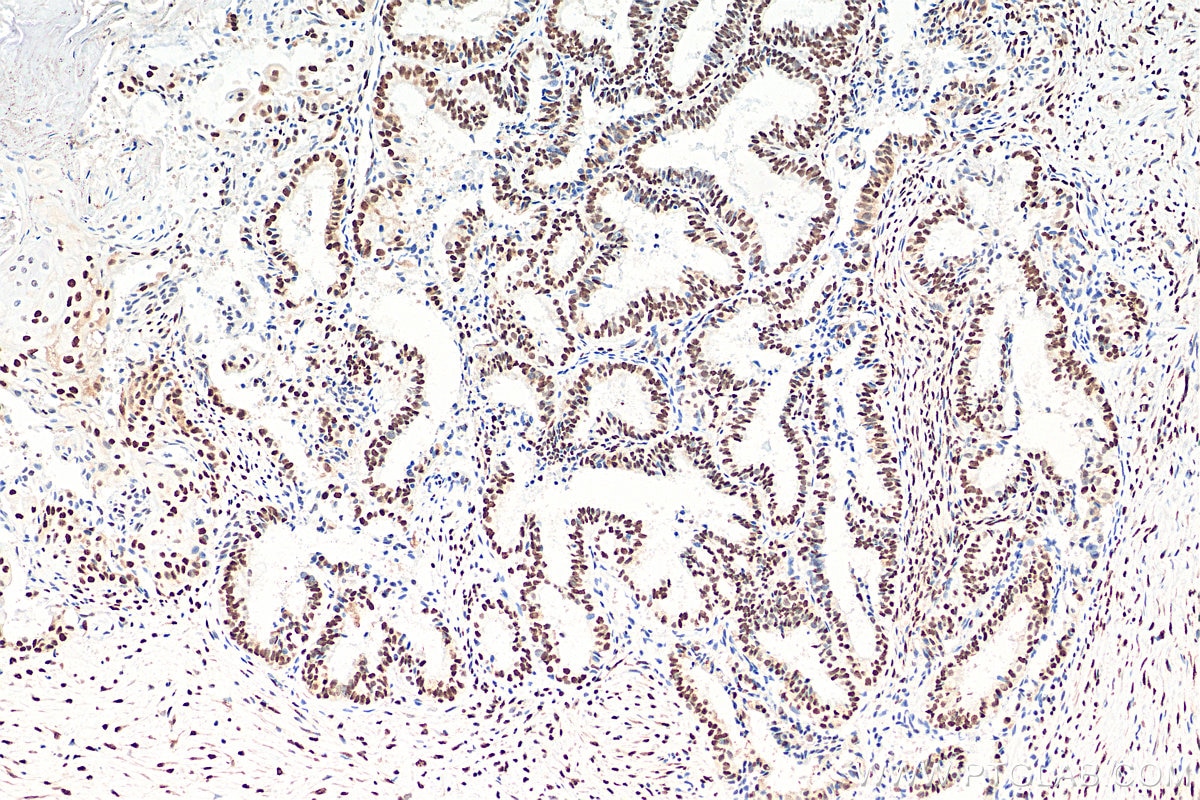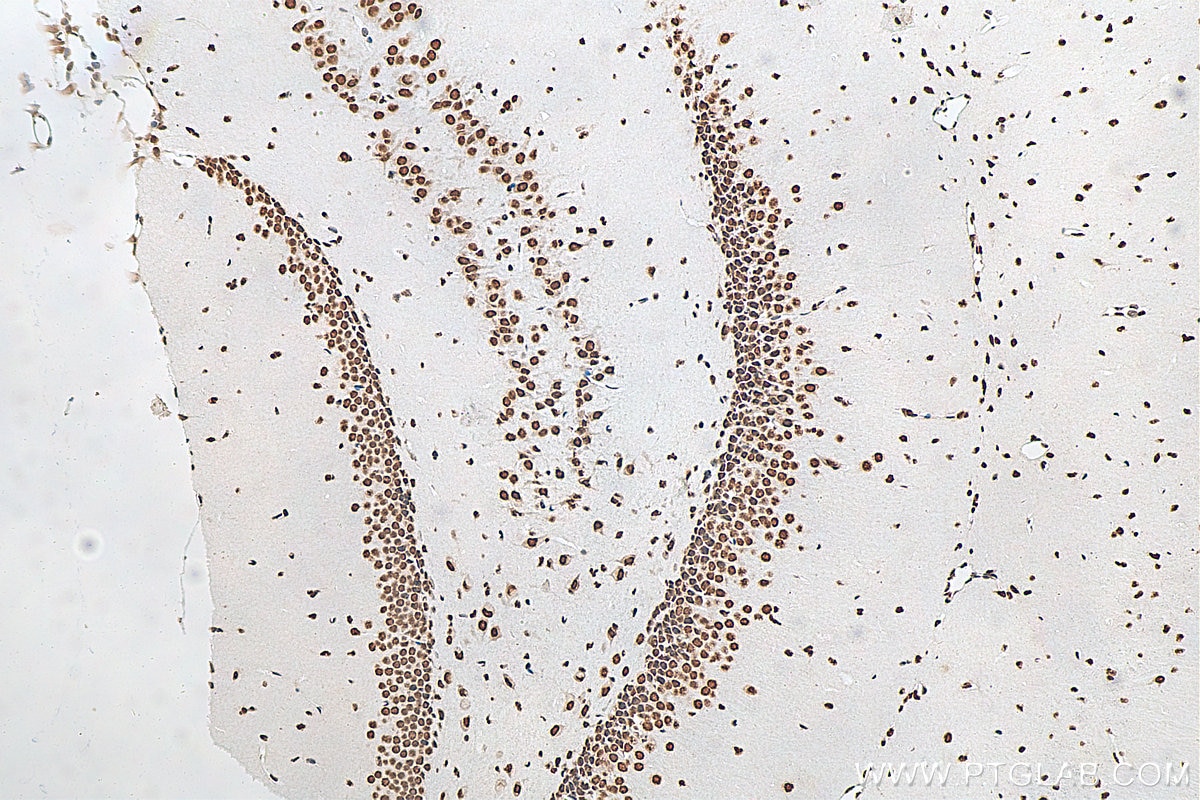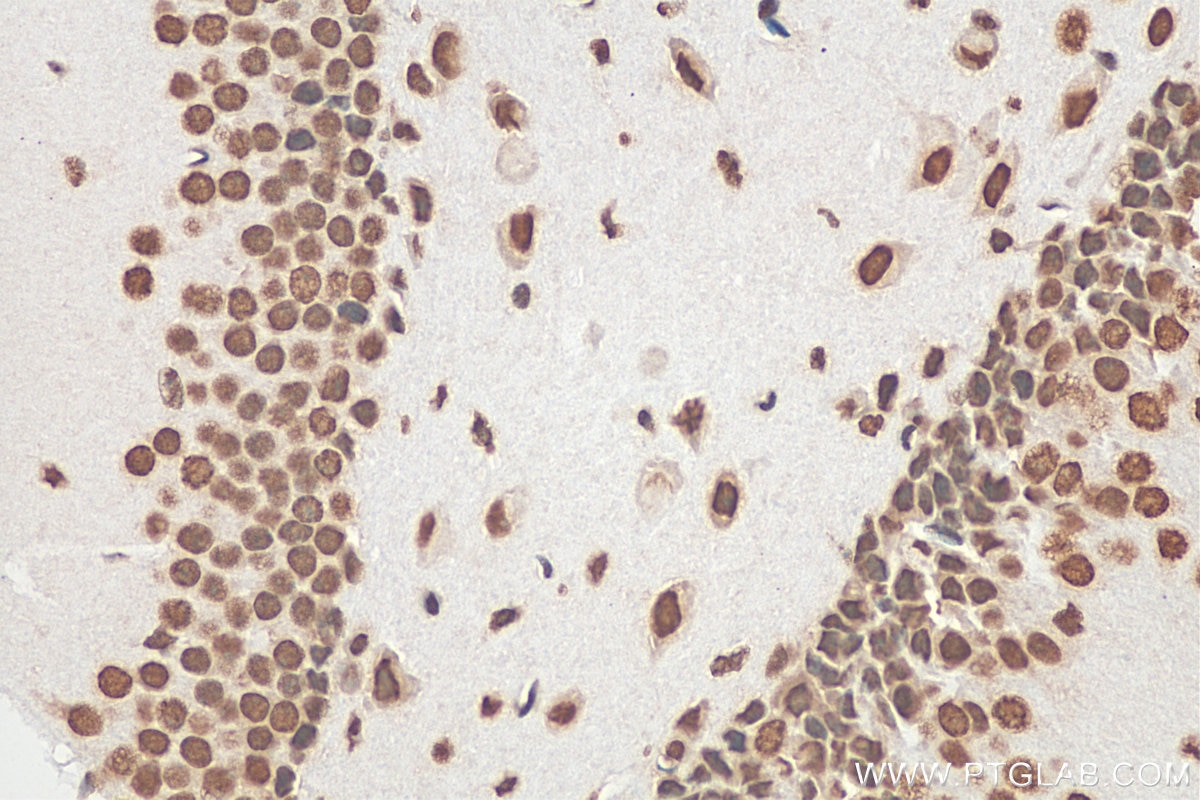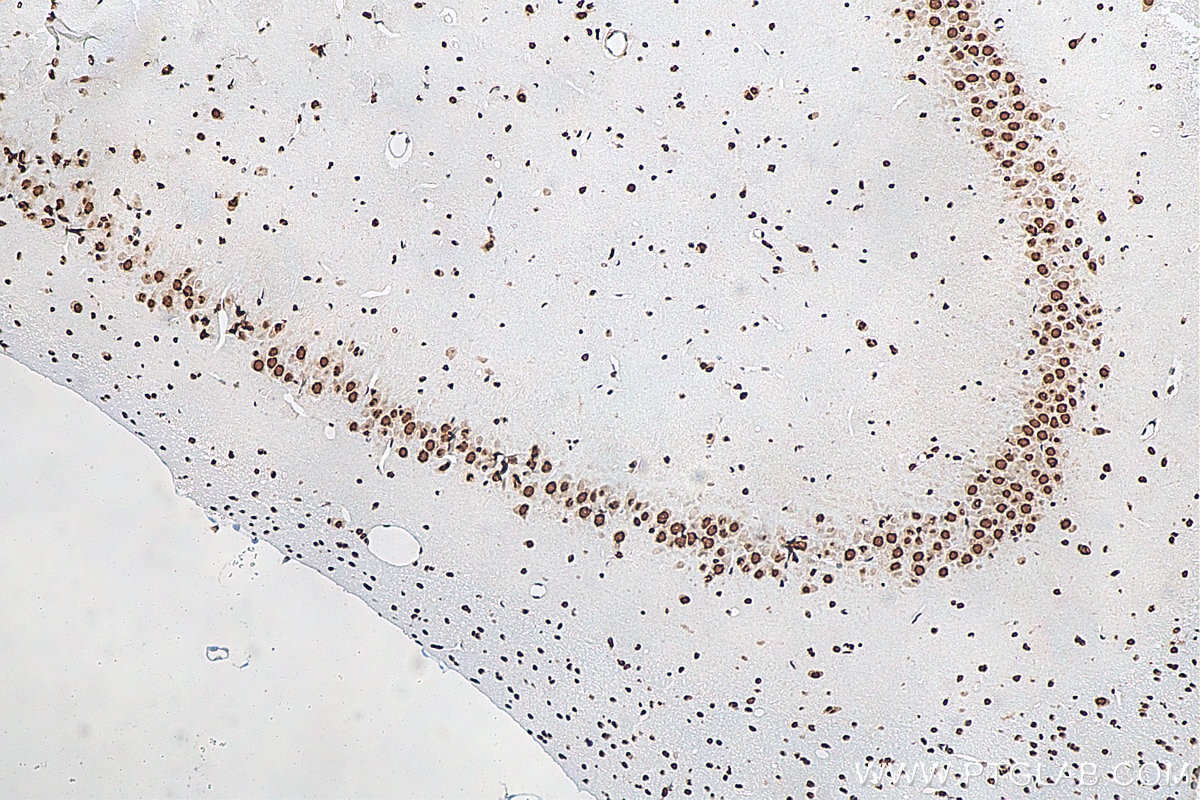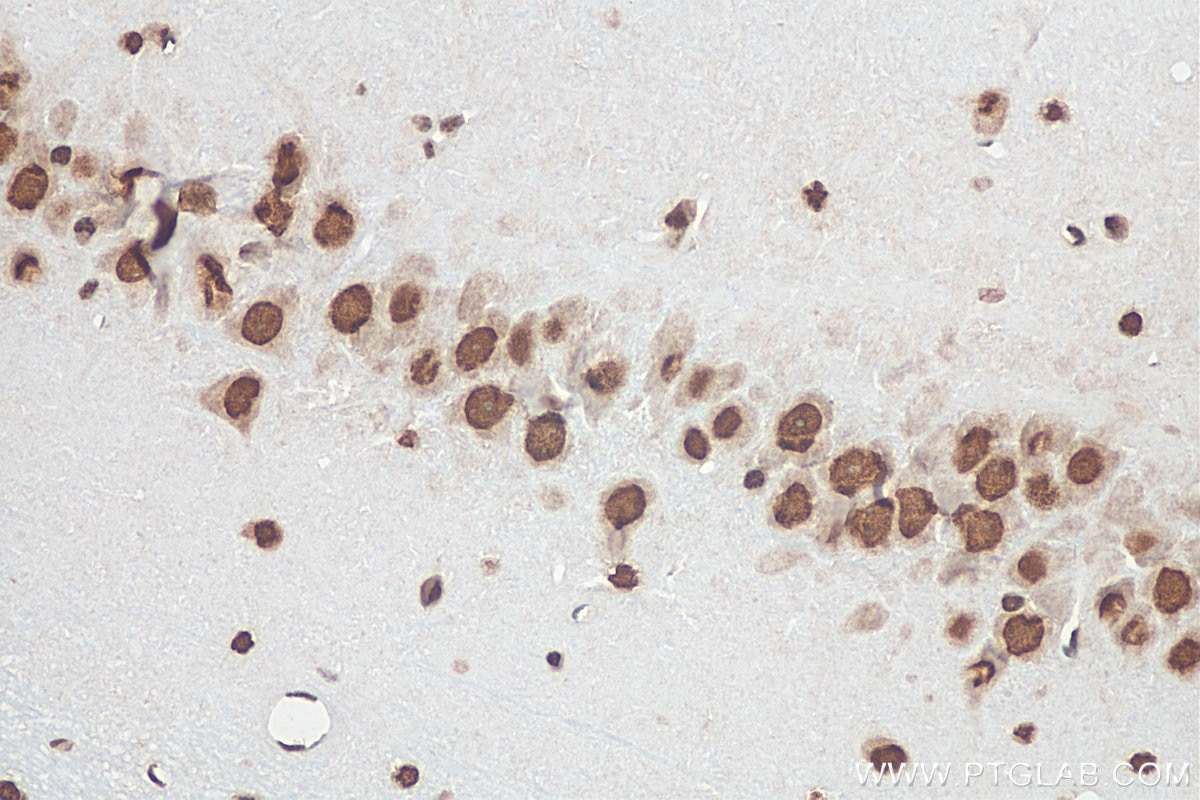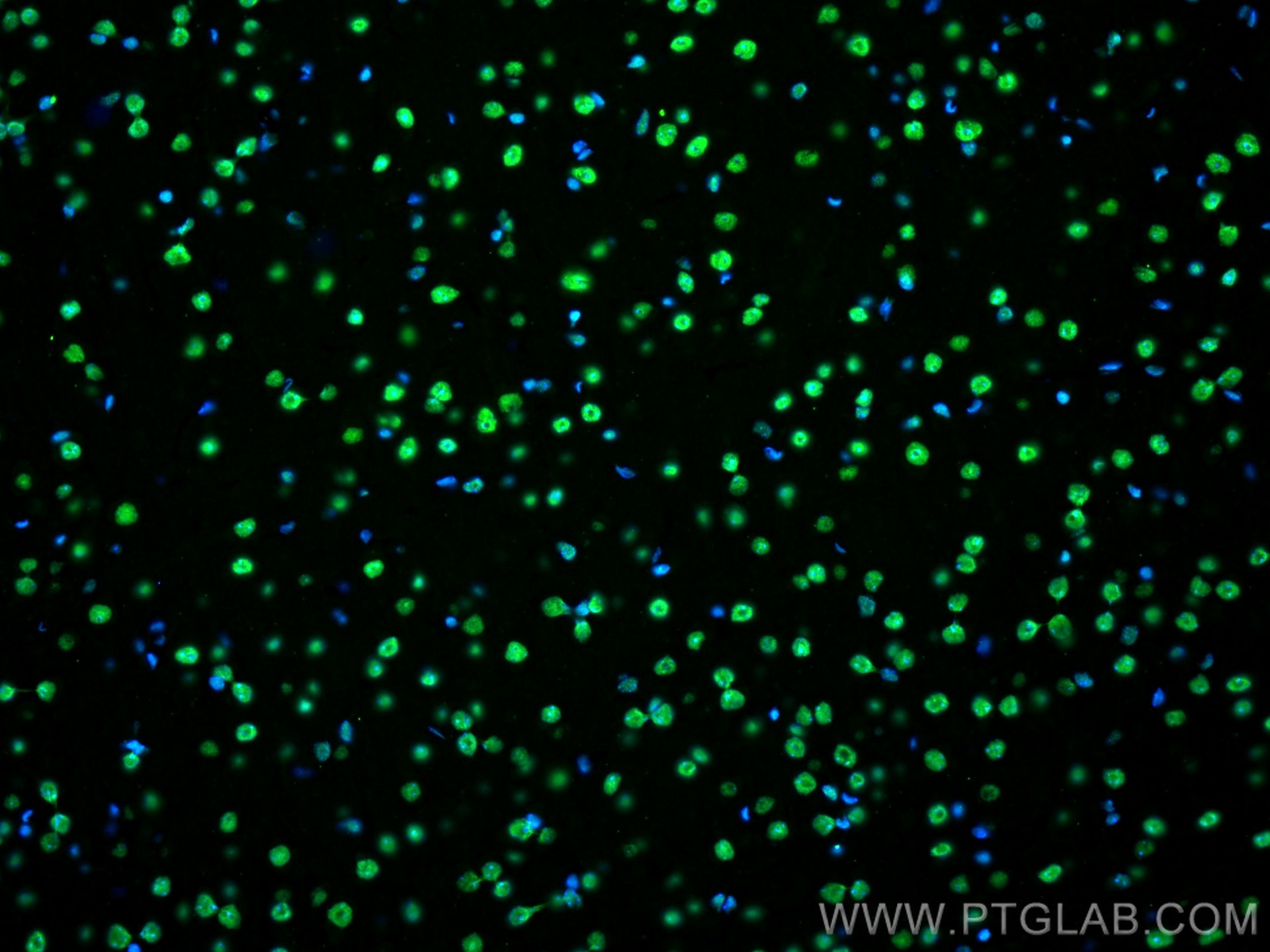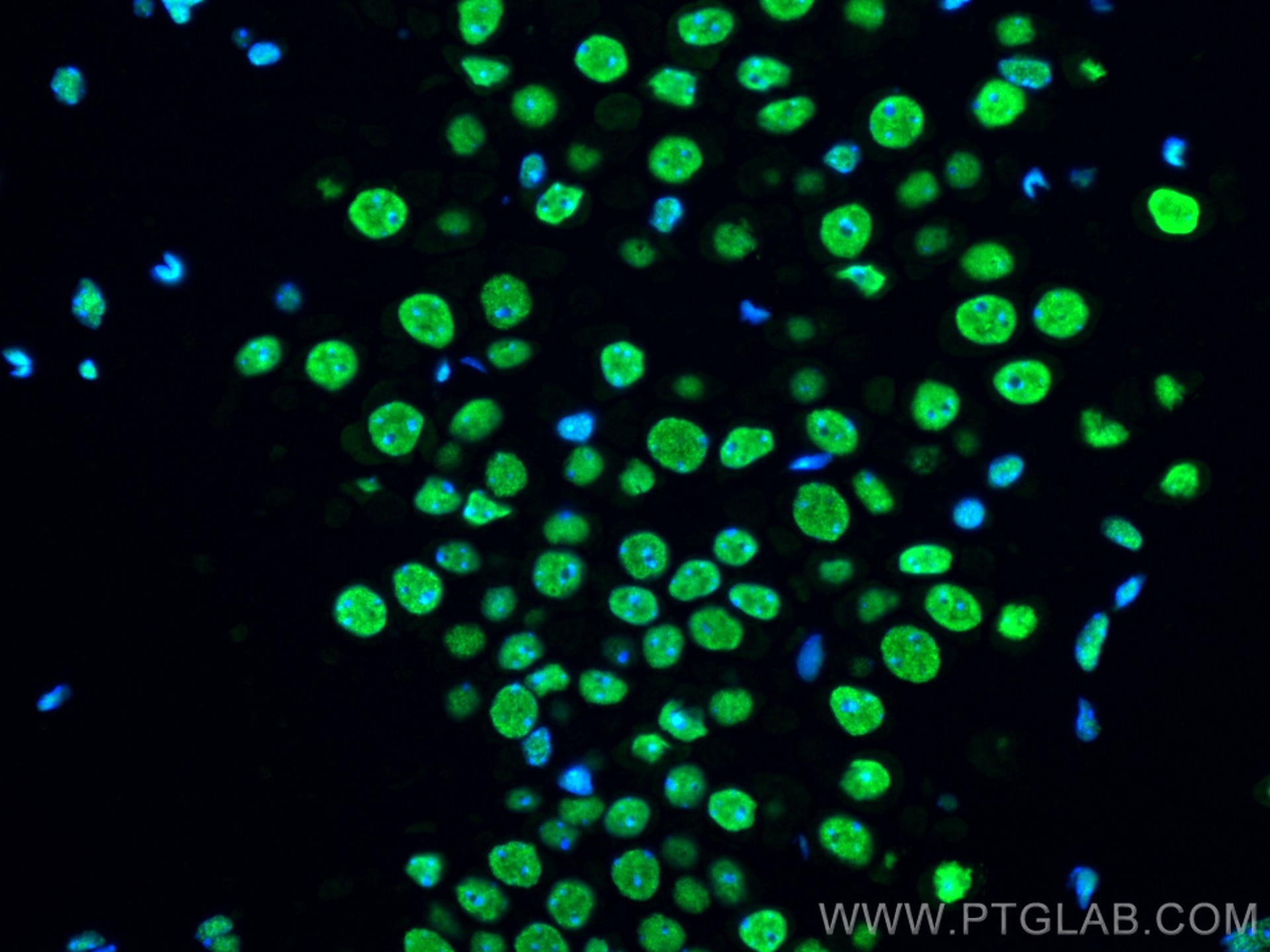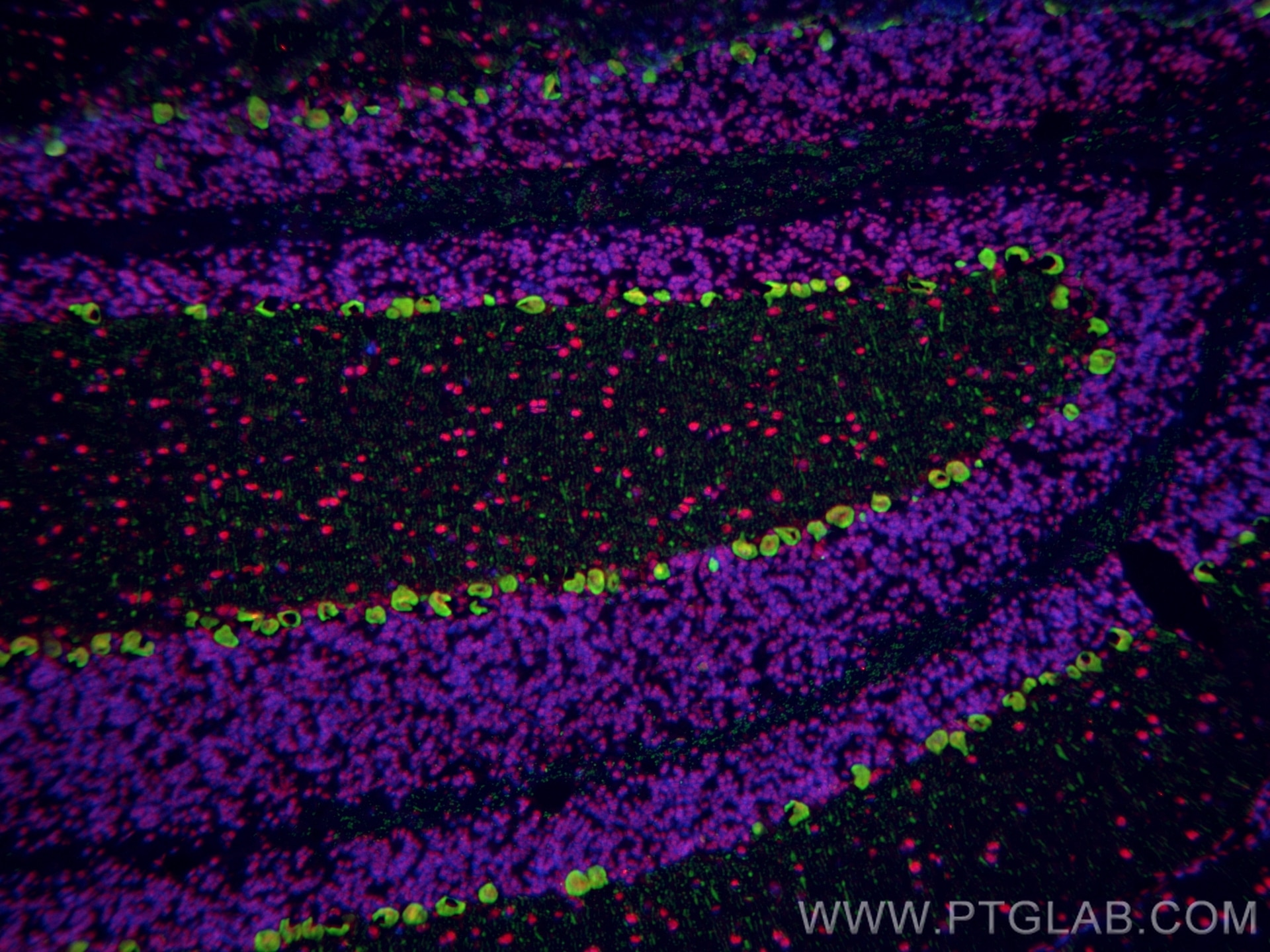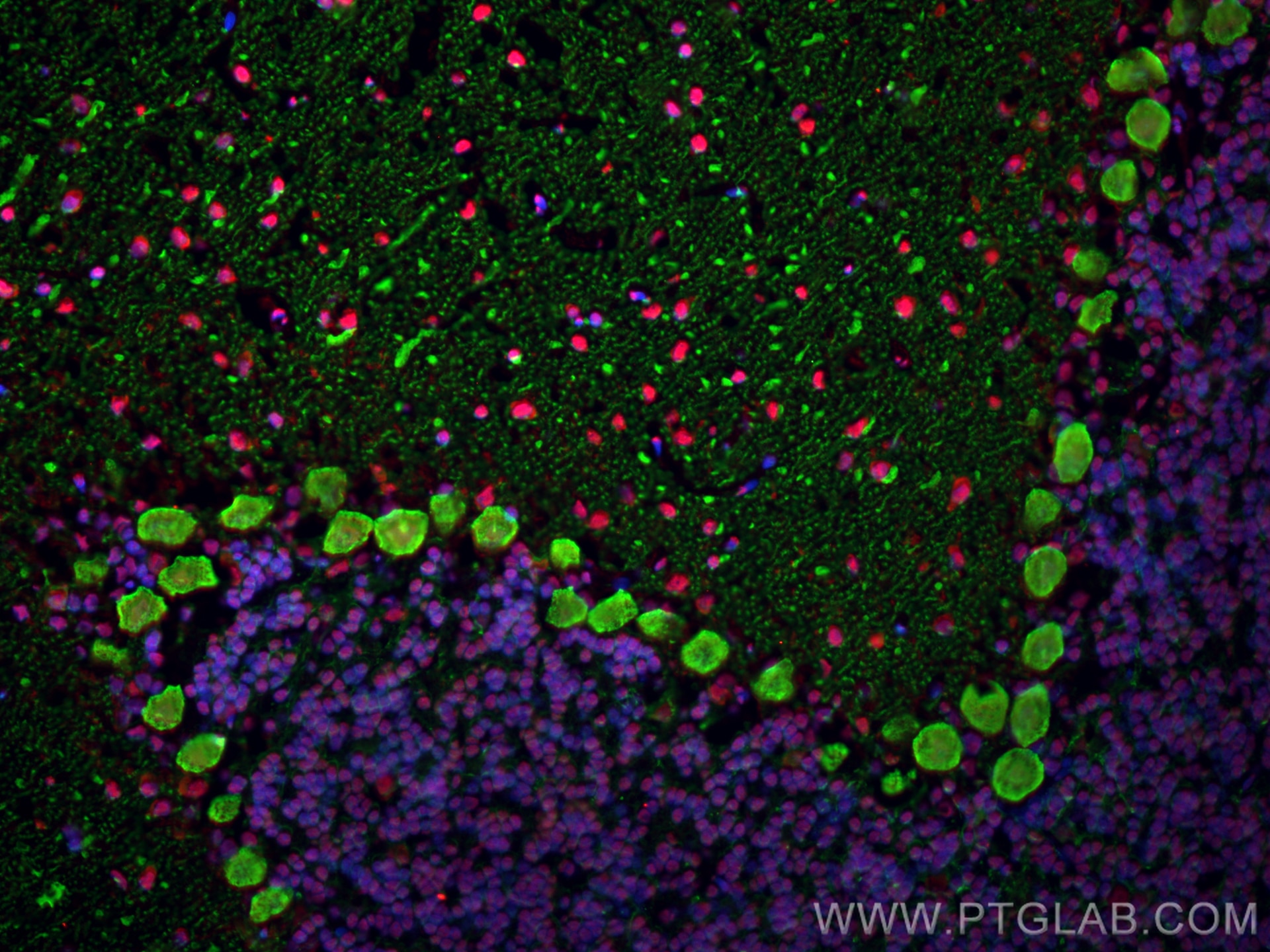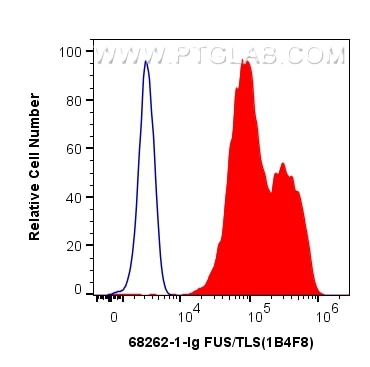- Phare
- Validé par KD/KO
Anticorps Monoclonal anti-FUS/TLS
FUS/TLS Monoclonal Antibody for WB, IHC, IF-P, IF-Fro, FC (Intra), IP, ELISA
Hôte / Isotype
Mouse / IgG1
Réactivité testée
Humain, rat, souris
Applications
WB, IHC, IF-P, IF-Fro, FC (Intra), IP, ELISA
Conjugaison
Non conjugué
CloneNo.
1B4F8
N° de cat : 68262-1-Ig
Synonymes
Galerie de données de validation
Applications testées
| Résultats positifs en WB | cellules HeLa, cellules HEK-293, cellules HepG2, cellules Jurkat, cellules Neuro-2a, tissu cérébral de rat, tissu cérébral de souris |
| Résultats positifs en IP | cellules K-562, |
| Résultats positifs en IHC | tissu cérébral de rat, tissu cérébral de souris, tissu de cervelet de souris, tissu de côlon humain, tissu de tumeur ovarienne humain il est suggéré de démasquer l'antigène avec un tampon de TE buffer pH 9.0; (*) À défaut, 'le démasquage de l'antigène peut être 'effectué avec un tampon citrate pH 6,0. |
| Résultats positifs en IF-P | tissu cérébral de souris, |
| Résultats positifs en IF-Fro | tissu de cervelet de rat, tissu de cervelet de souris |
| Résultats positifs en FC (Intra) | cellules HEK-293T, |
Dilution recommandée
| Application | Dilution |
|---|---|
| Western Blot (WB) | WB : 1:5000-1:50000 |
| Immunoprécipitation (IP) | IP : 0.5-4.0 ug for 1.0-3.0 mg of total protein lysate |
| Immunohistochimie (IHC) | IHC : 1:5000-1:20000 |
| Immunofluorescence (IF)-P | IF-P : 1:200-1:800 |
| Immunofluorescence (IF)-FRO | IF-FRO : 1:200-1:800 |
| Flow Cytometry (FC) (INTRA) | FC (INTRA) : 0.40 ug per 10^6 cells in a 100 µl suspension |
| It is recommended that this reagent should be titrated in each testing system to obtain optimal results. | |
| Sample-dependent, check data in validation data gallery | |
Applications publiées
| KD/KO | See 1 publications below |
| WB | See 4 publications below |
Informations sur le produit
68262-1-Ig cible FUS/TLS dans les applications de WB, IHC, IF-P, IF-Fro, FC (Intra), IP, ELISA et montre une réactivité avec des échantillons Humain, rat, souris
| Réactivité | Humain, rat, souris |
| Réactivité citée | rat, Humain, souris |
| Hôte / Isotype | Mouse / IgG1 |
| Clonalité | Monoclonal |
| Type | Anticorps |
| Immunogène | FUS/TLS Protéine recombinante Ag2150 |
| Nom complet | fusion (involved in t(12;16) in malignant liposarcoma) |
| Masse moléculaire calculée | 75 kDa |
| Poids moléculaire observé | 53 kDa, 68-75 kDa |
| Numéro d’acquisition GenBank | BC026062 |
| Symbole du gène | FUS/TLS |
| Identification du gène (NCBI) | 2521 |
| Conjugaison | Non conjugué |
| Forme | Liquide |
| Méthode de purification | Purification par protéine G |
| Tampon de stockage | PBS with 0.02% sodium azide and 50% glycerol |
| Conditions de stockage | Stocker à -20°C. Stable pendant un an après l'expédition. L'aliquotage n'est pas nécessaire pour le stockage à -20oC Les 20ul contiennent 0,1% de BSA. |
Informations générales
FUS (also named TLS and POMp75) belongs to the RRM TET family. FUS may play a role in the maintenance of genomic integrity; it binds both single-stranded and double-stranded DNA and promotes ATP-independent annealing of complementary single-stranded DNAs and D-loop formation in superhelical double-stranded DNA. FUS is also an RNA-binding protein, and its links to neurodegenerative disease proffer the intriguing possibility that altered RNA metabolism or RNA processing may underlie or contribute to neuron degeneration[PMID: 22640227]. FUS may be a cause of angiomatoid fibrous histiocytoma (AFH) and is implicated in certain forms of amyotrophic lateral sclerosis (ALS) and frontotemporal dementias (FTDs) such as frontotemporal lobar dementia with ubiquitin inclusions (FTLD-U)(PMID: 22640227). Multiple phosphorylation on the N terminus of FUS caused that FUS was detected 68-75 kDa (PMID:24899704).
Protocole
| Product Specific Protocols | |
|---|---|
| WB protocol for FUS/TLS antibody 68262-1-Ig | Download protocol |
| IHC protocol for FUS/TLS antibody 68262-1-Ig | Download protocol |
| IF protocol for FUS/TLS antibody 68262-1-Ig | Download protocol |
| IP protocol for FUS/TLS antibody 68262-1-Ig | Download protocol |
| FC protocol for FUS/TLS antibody 68262-1-Ig | Download protocol |
| Standard Protocols | |
|---|---|
| Click here to view our Standard Protocols |
Publications
| Species | Application | Title |
|---|---|---|
Mol Cell A di-acetyl-decorated chromatin signature couples liquid condensation to suppress DNA end synapsis | ||
Mol Cell Aberrant phase separation drives membranous organelle remodeling and tumorigenesis | ||
Arterioscler Thromb Vasc Biol Exosomes From IgE-Stimulated Mast Cells Aggravate Asthma-Mediated Atherosclerosis Through circRNA CDR1as-Mediated Endothelial Cell Dysfunction in Mice | ||
Clin Exp Med FUS and METTL3 collaborate to regulate RNA maturation, preventing unfolded protein response and promoting gastric cancer progression
| ||
Nat Neurosci Mitochondrial respiratory complex IV deficiency recapitulates amyotrophic lateral sclerosis | ||
Cell Microglial-derived C1q integrates into neuronal ribonucleoprotein complexes and impacts protein homeostasis in the aging brain |
Avis
The reviews below have been submitted by verified Proteintech customers who received an incentive for providing their feedback.
FH Vikas (Verified Customer) (04-08-2025) | very good. Highly recomended
|
